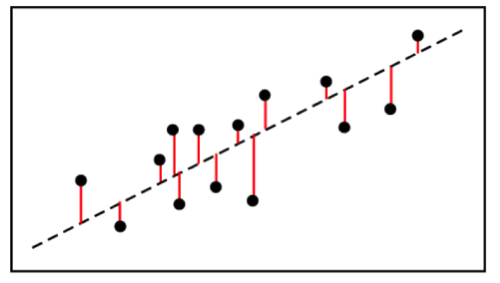Seoul has continued to build office with the conclusion of the International Financial Center Seoul in 2013. It ranked 7th in the 2015 Global Financial Centres Index, recording the highest growth in rating amongst the top 10 cities. Shanghai. Main efforts have been directed to making Pudong a financial leader by 2010. Efforts during the 1990s were combined, but in the early 21st century, Shanghai made headway. What is a future in finance. Factors such as a "protective banking sector" and a "extremely limited capital market" have held the city back, according to one analysis in 2009 in. Shanghai has done well in terms of market capitalisation but it requires to "attract an army of cash managers, legal representatives, accountants, actuaries, brokers and other specialists, Chinese and foreign" to enable it to take on New York and London.
Sydney's northern CBD functions as the monetary and banking center of the city Sydney (How to finance a second home). Australia's most populated city is a financial and organization services hub not just for Australia but for the Asia-Pacific region. Sydney completes rather closely with other Asia Pacific hubs, nevertheless it focuses a higher part of Australian-based organization in regards to clients and services. Sydney is home to two of Australia's four biggest banks, the Commonwealth Bank of Australia and Westpac Banking Corporation, both headquartered in the Sydney CBD. Sydney is also home to 12 of the leading 15 possession managers in Australia. Melbourne, on the other hand, tends to concentrate more of the Australian superannuation funds (pension funds).
Sydney is also house to the Australian Securities Exchange and an array of brokerage banks which are either headquartered or regionally based in Sydney, including Australia's largest investment bank Macquarie Group. Toronto. The city is a leading market for Canada's biggest financial organizations and big insurance coverage business. It has actually also ended up being one of the fastest growing monetary centres following the late-2000s recession, helped by the stability of the Canadian banking system. Many of the financial market is focused along Bay Street, where the Toronto Stock Exchange is also situated. Others. Mumbai is an emerging monetary centre, which also provides global support services to London and other monetary centres.
Financial markets in nations and regions such as the Indian subcontinent and Malaysia require not just well-trained people but the "entire institutional infrastructure of laws, regulations, agreements, trust and disclosure" which takes time to take place. Primitive monetary centres started in the 11th century in the Kingdom of England at the annual fair of St. Giles and in the Kingdom of Germany at the Frankfurt fall fair, then developed in medieval France during the Champaign Fairs. The first genuine worldwide financial center was the City State of Venice which gradually emerged from the 9th century to its peak in the 14th century.
In the sixteenth century, the general financial supremacy of the Italian city-states slowly waned, and the centre of financial activities in Europe shifted to the Low Nations, initially to Bruges, and later on to Antwerp and Amsterdam which served as Entrept cities. They also became important centres of monetary development, capital build-up and financial investment. [] In the 17th century, Amsterdam became the leading industrial and financial centre of the world. It held this position for more than a century, and was the very first modern-day model of a global financial centre. As Richard Sylla (2015) kept in mind, "In modern history, several nations had what some of us call financial transformations.

The Greatest Guide To How To Finance An Older Car
The first was the Dutch Republic 4 centuries ago." Amsterdam unlike its predecessors such as Bruges, Antwerp, Genoa, and Venice controlled essential resources and markets straight, sending its fleets to all quarters of the world. Historically, the Dutch was accountable for at least four major pioneering institutional (in economic, company and financial history of the world): The foundation of the Dutch East India Company (VOC), the world's initially openly listed business and the very first historic model of the international corporation (or transnational corporation) in its modern-day sense, in 1602. The birth of the http://jasperfbvz778.fotosdefrases.com/the-4-minute-rule-for-how-to-finance-an-older-car VOC is typically considered to be the authorities start of corporate-led globalization with the increase of contemporary corporations (international corporations in particular) as an extremely considerable socio-politico-economic force that affect human lives in every corner of the world today.
With its pioneering functions, the VOC is usually thought about a Click to find out more significant institutional development and the design for modern-day corporations (massive company enterprises in specific). It is essential to note that the majority of the biggest and most prominent business of the modern-day world are publicly-traded multinational corporations, including companies. Like contemporary publicly-listed multinational companies, in lots of ways, the post-1657 English/British East India Business's operational structure was a historic derivative of the earlier VOC design. The establishment of the Amsterdam Stock Market (or Beurs van Hendrick de Keyser in Dutch), the world's very first main stock market, in 1611, along with the birth of the first fully operating capital market in the early 1600s.
The Dutch were the firsts to use a fully fledged capital market (consisting of the bond market and stock exchange) to finance public companies (such as the VOC and WIC). This was a precedent for the global securities market in its contemporary form. In the early 1600s the VOC developed an exchange in Amsterdam where VOC stock and bonds might be sold a secondary market. The facility of the Amsterdam Stock Exchange (Beurs van Hendrick de Keyser) by the VOC, has long been acknowledged as the origin of modern-day stock exchanges that focus on developing and sustaining secondary markets in the securities released by corporations.
The Dutch originated stock futures, stock options, short selling, bear raids, debt-equity swaps, and other speculative instruments. Amsterdam businessman Joseph de la Vega's Confusion of Confusions (1688) was the earliest book about stock trading. The facility of the Bank of Amsterdam (Amsterdamsche Wisselbank), frequently considered to be the very first historical design of the reserve bank, in 1609. The birth of the Amsterdamsche Wisselbank resulted in the intro of get out of timeshare contract the concept of bank money. Together with a variety of subsidiary regional banks, it performed lots of functions of a main banking system. It occupied a main position in the financial world of its day, offering an efficient, effective and trusted system for nationwide and worldwide payments, and presented the first ever international reserve currency, the bank guilder.

The model of the Wisselbank as a state bank was adjusted throughout Europe, consisting of the Bank of Sweden (1668) and the Bank of England (1694 ). The development of the first taped professionally handled cumulative investment plans (or mutual fund), such as mutual funds, in 1774. Amsterdam-based businessman Abraham van Ketwich (also referred to as Adriaan van Ketwich) is typically credited as the begetter of the world's very first shared fund. In action to the monetary crisis of 17721773, Van Ketwich formed a trust named "Eendragt Maakt Magt" (" Unity Develops Strength"). His aim was to provide little investors with a chance to diversify.